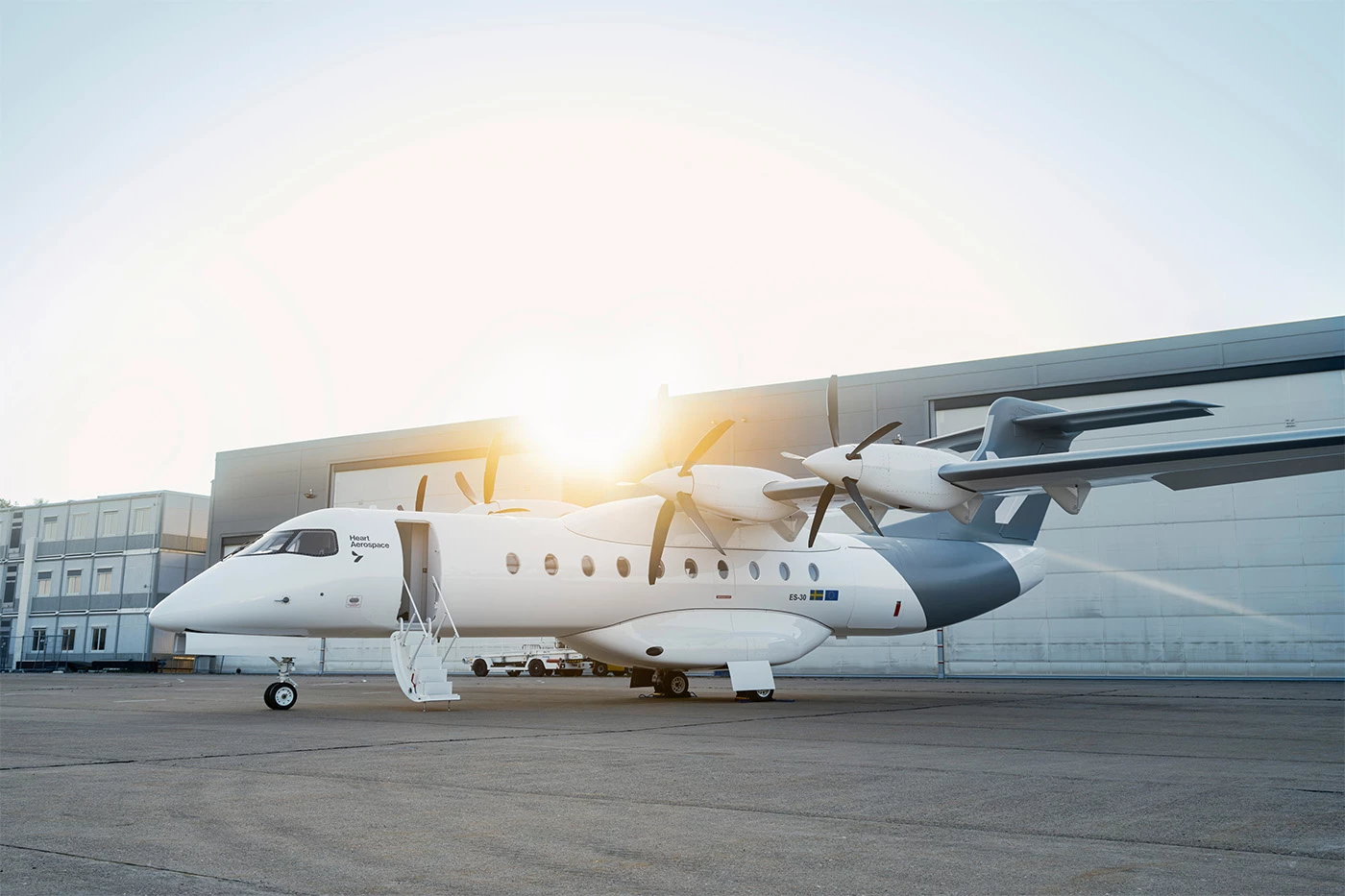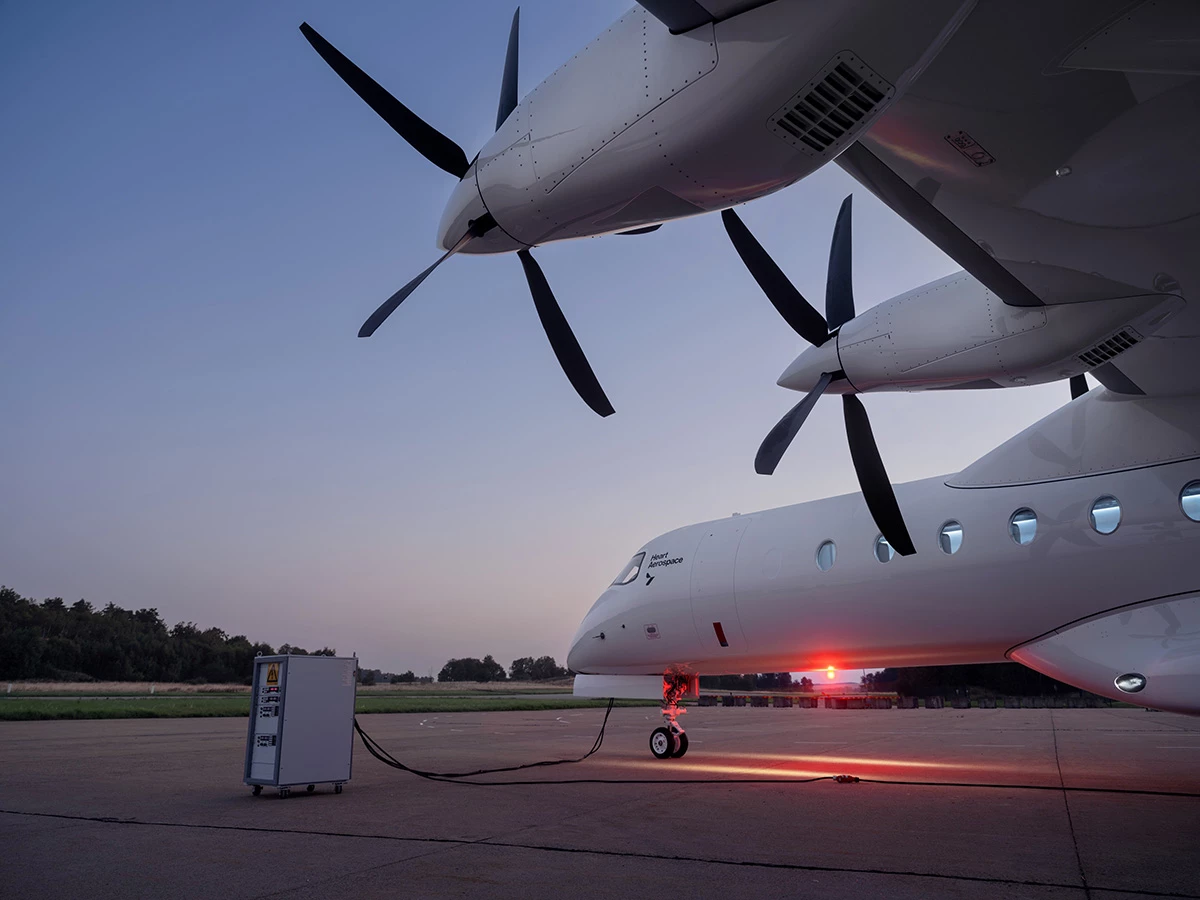Swedish startup Heart Aerospace is gearing up for the first experimental flight of the X1 early next year, an electric demonstrator aircraft that's the same size as its upcoming 30-seater commercial plane.
"The initial experimental flight of the Heart X1 demonstrator is designed to validate the capabilities of Heart’s innovative electric propulsion technology," the company says. It'll be a major milestone for the Gothenburg-based firm, which was founded in 2019 and has since raised US$145 million for its plans to reshape regional aviation.
Heart unveiled the X1 back in September, noting that it was built to similar proportions as the ES-30, with a 32-meter (105 ft) wingspan. The test flight will take off from Plattsburgh International Airport in upstate New York, which the company found to be an ideal choice given its low air traffic density, and support for developing and testing transportation tech. Heart hasn't yet specified if the X1 will also match the ES-30's zero-emissions range of 124 miles (200 km), though.
The ES-30 commercial aircraft is designed to take off from runways as short as 1,100 m (3,609 ft), thanks to its high-torque electric motors and turbo propellers, and is going to feature a hybrid system to allow for a total range of nearly 250 miles (400 km). With that relatively short range and its limited seating capacity, Heart isn't looking to replace major airliners. Instead, the focus is on connecting smaller 'pocket airports' with roughly 2 acres of space in underserved communities.

There are a few other ventures aiming to make emission-free commercial flight a reality. You've got Swiss outfit ZeroAvia working on a hydrogen-electric hybrid amphibious aircraft for use in island regions.
Back in January, Elysian claimed its 1960s-inspired aircraft design with a small fuselage and long, low-mounted wings would work well enough to carry 90 passengers in a battery-powered plane. A few months ago, the Dutch startup noted that 10 critical bottlenecks like battery charging times and propeller-wing integrations would not prove to be "show-stoppers." If it's right about that and all the hard work to follow over the next several years, Elysian will take to the skies by 2033.
For its part, Heart has its work work cut out for it ahead of its first X1 flight. The company noted the aircraft is "undergoing extensive tests of critical systems to ensure a safe and successful flight." We'll also see a Heart X2 incorporate learnings from the first demonstrator, and test the firm's "Independent Hybrid propulsion" system in 2026. That's a whole lot of stuff to get right before the company's commercial debut in 2028.

If you can't wait that long to see what Heart's up to, grab a copy of Microsoft Flight Simulator 2024 and pilot the ES-30 from the comfort of your own home instead.
Source: Heart Aerospace







